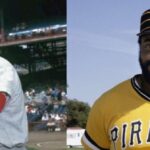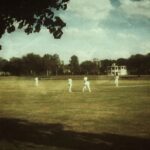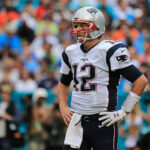David Ferrer Takes 24-carat Tennis From Latin American to Davis Cup Victory
Everything about the climax of the tennis’s “Golden Swing” glowed.
It was played out in the Mexican heat, under brilliant floodlights, on the deepest of orange backgrounds.
It brought together two golden-skinned Spaniards in their second final in six days.
And it delivered up a treasure chest of outstanding tennis.
But start with the protagonists: David Ferrer and Juan Carlos Ferrero.
Not just compatriots: They both come from the Valencia region of Spain.
Not just Davis Cup team mates, but business partners: They jointly back the newly-branded Valencia 500 tournament that moved to the stunning Agora building in 2009.
Not only two of Spain’s most successful tennis players: They are close friends who play and practise together.
These numerous bonds made for not one but two helpings of fast-moving, sporting, and intense tennis on the clay of Latin America in the final days of February.
For drama, the match could not have promised more. These are two men who have been around the block a few times, have seen their fortunes ebb and flow, but have both expressed their desire to get back to the top 10.
Ferrero, who turned 30 just days before winning the Brazil Open three weeks ago, has reached an ATP final in every year since 1999. He won titles every year between 1999 and 2003, including four Masters and the French Open, which took him briefly to No 1 in the world. It was another six years before he claimed his next title: Casablanca last year.
Now, coming into this closer of the “Golden Swing,” he could boast not one new title but two in consecutive weeks. And here he was, aiming to add a third.
Ferrero has worked hard on his fitness and stamina off court in order to taste success on court again. It has reaped riches. From a ranking of 115 during that Casablanca tournament, he has now reached his highest ranking—14—since October 2004.
Then there is the back story for Ferrer.
He is two weeks shy of his 28th birthday, and has reached an ATP final in every year since 2002, bar one. What he has lacked in Ferrero’s shot-making flair he has made up for in terrier-like determination.
Hard-working, a power-pack of muscle and energy, he came closest to touching pure gold in the finals of the Masters Cup of 2007. His last ATP title was back in the spring of 2008, and he’s won only one ATP 500 title in his career.
Ferrer’s main victories in 2009 were in Davis Cup ties: He won all six matches he played. But since last spring, aside from those ties, he has experienced a real slump in what seemed to be a devastating loss of confidence. Now, though, he’s almost back to his No 16 ranking of a year ago—just two short of Ferrero.
The positive side to his narrative is that, with an upturn in form, he can rake in the points throughout this year.
Their first meeting was in Bueno Aires.
Ferrero worked through a straight forward draw, buoyed up by a devastating victory the week before over Lukasz Kubot in the final of the Brazil Open.
Ferrer, meanwhile, worked his way though some daunting clay-courters without losing a set, and posted his 300th ATP match win on the way.
The two “Ferrs” reached the final, and it took more than two-and-a-half hours to separate them. Ferrero claimed his second title in the space of a week and his first over Ferrer on clay.
On to Acapulco two weeks ago, where Ferrero met fellow Spaniard Nicolas Almagro: outstanding on clay, but dispatched in three sets.
Ferrer faced the toughest of opponents in Fernando Gonzalez, and also dispatched him in three sets.
Eventually, the Spaniards’ fortunes, their histories and their tennis were spread out for all to share on the Mexican dust.
The deep terracotta of the Acapulco arena, set in its deep blue surround, immediately summoned warm and scented evenings. Clay courts produce a rounder, less crisp soundtrack than many hard courts, a soundtrack overlaid by the skidding of feet on grit.
As one set led to a second and a third, the rhythm of the ball-strike speeded up, and the timing and accuracy of both players made the balls sing through the court.
Time and again, each player confirmed or refuted calls for the other as they might have done in a Saturday knock-about. Implicit trust, no hold-ups, no dispute.
Between points and between games, it was the same story. They would bat the ball to the server’s end, fetch their own towels, scamper back to the baseline.
Ferrer scored winner after winner with his backhand down the line, Ferrero with his forehand down the line. Ferrer dominated at first—he lost just one point on his serve in winning the opening set. Then Ferrero’s variety stole enough extra points to break serve in the second set. His drop shots and angled backhands proved particularly effective.
It came down to the final set, and the effect of 14 matches in fewer than 20 days started to tell on the Ferrero legs. He bent just a little less deeply, and caught the net with a few more shots and serves. With both men barely pausing for balls to be gathered or scores to be given, the match accelerated to victory for Ferrer. It must have seemed like a jewel of a win after two years in the wilderness.
The match’s conclusion was entirely predictable: not the score, nor the victor, but the smiles, the embrace, and the animated congratulations and condolences exchanged at the net. Rarely can a winner and a loser have found so much to talk about during their photo call…or perhaps they were just deciding where to go for dinner.
Their successful “Golden Swing” over, Ferrero and Ferrer were both due to head back to Spain to play their part in the Davis Cup tie. But the rigors of three tour finals on the trot put paid to Ferrero, who at the last minute gave way to Almagro for the tie.
The Spanish opponents, Switzerland, faced a formidable task, on clay, away from home, and against one of the strongest tennis nations in the world. Add in Ferrer’s experience, desire to win, his record in Davis Cup, and the boost of two ATP finals in a row, and Wawrinka and his clan might have wondered if it was worth the plane fare.
In the event, the Swiss man took the first rubber against Almagro in five gruelling sets, and then took on doubles duty, too.
By the time he came up against Ferrer in the third singles rubber, he looked a weary man. Ferrer, on the other hand, was still glowing from his Mexican victory and an easy win in his first rubber.
With Nadal sidelined by injury, Ferrer also revelled in the opportunity to lead his nation in one of his favourite events, and so produced a trademark gutsy, hard-working, and energetic performance to seal the tie in straight and easy sets.
Ferrer can only enjoy a short break to enjoy his successes of the last few weeks. Then it’s back to hard work on the hard courts at Indian Wells and Miami for the last time this spring.
He will, there can be no question, welcome the red gold of Europe as it beckons on the horizon. He could be anticipating his best chance at a top 10 ranking in some time.
















